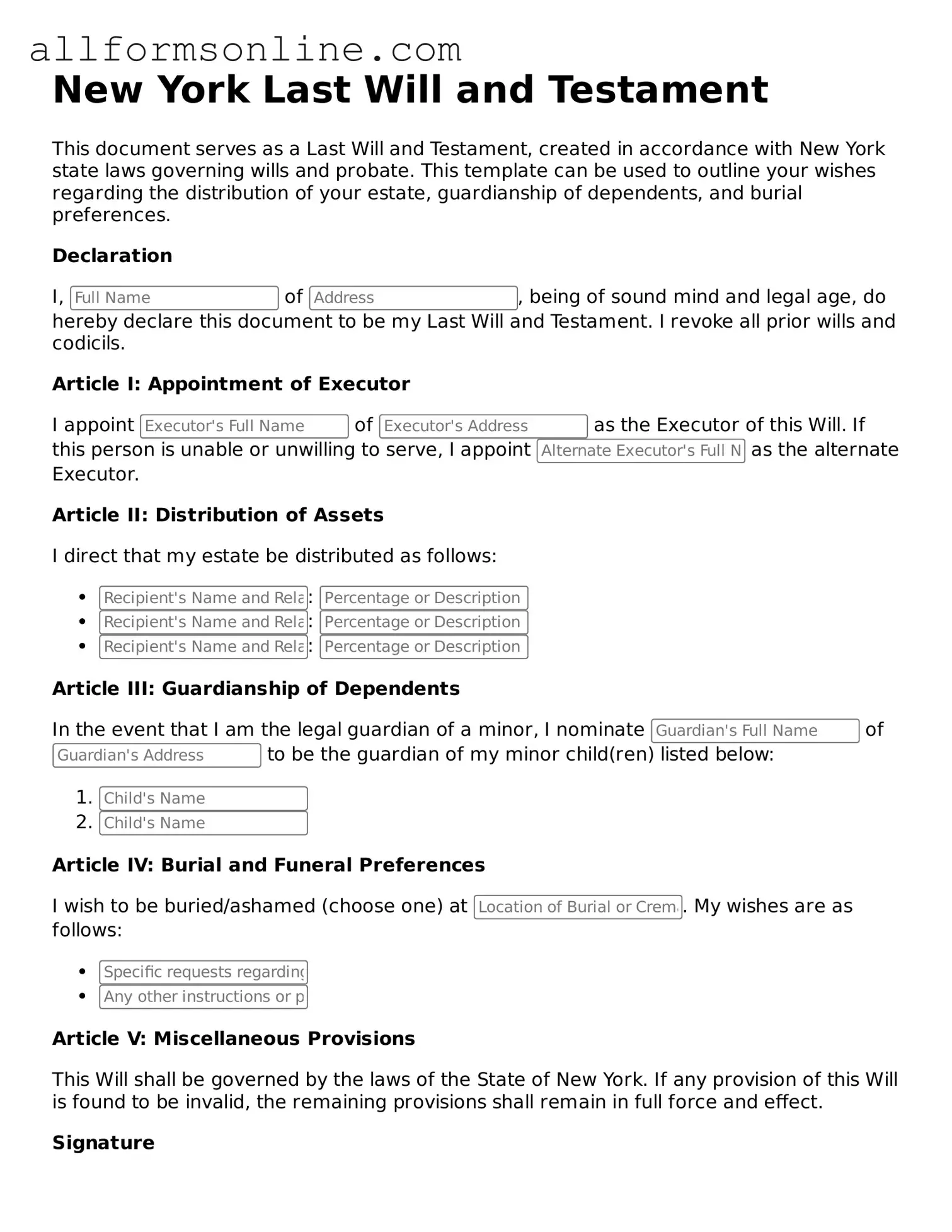What is a Last Will and Testament in New York?
A Last Will and Testament is a legal document that outlines how a person’s assets and affairs should be handled after their death. In New York, this document allows individuals to specify beneficiaries, appoint guardians for minor children, and designate an executor to manage the estate. It serves as a critical tool for ensuring that one's wishes are honored and can help avoid disputes among heirs.
Who can create a Last Will and Testament in New York?
In New York, any individual who is at least 18 years old and of sound mind can create a Last Will and Testament. This means that the person must understand the nature of the document and the implications of their decisions. It’s important to ensure that the will reflects the true intentions of the individual making it.
Do I need a lawyer to create a Last Will and Testament?
While it is not legally required to have a lawyer draft your will, consulting with one can provide significant benefits. A lawyer can help ensure that the will complies with New York laws and accurately reflects your wishes. They can also assist in addressing complex situations, such as blended families or significant assets.
What are the requirements for a valid Last Will and Testament in New York?
To be valid in New York, a Last Will and Testament must be in writing, signed by the testator (the person making the will), and witnessed by at least two individuals. These witnesses must be present at the same time and must also sign the will. It’s crucial that the will is executed properly to avoid challenges after the testator’s death.
Can I change my Last Will and Testament once it’s created?
Yes, you can change your Last Will and Testament at any time as long as you are of sound mind. Changes can be made through a new will or by creating a codicil, which is an amendment to the existing will. It’s important to follow the same formalities as the original will to ensure that any changes are legally binding.
What happens if I die without a Last Will and Testament?
If you die without a will, you are considered to have died "intestate." In this case, New York state law dictates how your assets will be distributed. This process can be lengthy and may not align with your wishes, often leading to disputes among family members. Having a will can provide clarity and control over the distribution of your estate.
Can I disinherit someone in my Last Will and Testament?
Yes, you can disinherit someone in your Last Will and Testament. However, it’s essential to be clear about your intentions. In New York, if you wish to exclude someone from inheriting, explicitly stating this in the will can help prevent potential legal challenges. It’s advisable to consult a lawyer to ensure that your wishes are clearly articulated.
What is the role of an executor in a Last Will and Testament?
The executor is the person appointed in the will to manage the estate after the testator's death. This individual is responsible for settling debts, distributing assets to beneficiaries, and ensuring that the terms of the will are carried out. Choosing a trustworthy and capable executor is crucial, as this person will play a significant role in the administration of your estate.
How is a Last Will and Testament executed in New York?
To execute a Last Will and Testament in New York, the testator must sign the document in the presence of at least two witnesses. These witnesses must also sign the will, affirming that they observed the testator sign the document. This process should be conducted carefully to ensure compliance with legal requirements, which can prevent complications later on.
Can I use a template for my Last Will and Testament?
While using a template for a Last Will and Testament can be a convenient starting point, it is essential to ensure that it complies with New York laws and accurately reflects your wishes. Templates may not address unique circumstances or complex family dynamics. Consulting with a legal professional can provide peace of mind that your will is valid and comprehensive.
